With the dawn of a cloudy day and rain in the forecast I decided to make a left turn to Greenville rather than continue on to Great Smoky Mountains National Park.
The Carl Sandburg Home NHS is high up in the hills in Flat Rock, North Carolina
. Who Carl Sandburg and why is house a National Park System unit? Sandburg was a famous American poet and biographer of Lincoln who chose to live in a pretty and quiet spot in western North Carolina for the last couple decades of his life. For Sandburg it was a good place to write and to walk in the woods.
I've frequently encountered references to Sandburg but have to admit I haven’t read any of his works. After his death the NPS approached his widow about the home in search of American literature oriented addition to park system. The house is left in the condition at the time of his death in 1967 and looks like an unkempt house of mostly bookshelves! Really, almost every room looks like a library. Sandburg was apparently oriented not to material possessions but entirely to intellectual pursuits, still displayed as his mess of books and periodicals around which the rest of his life was centered. Sandburg’s wife Lillian was world champion goat breeder and established a goat dairy on the farm, an operation that is still a working part of the site
. Overall the Sandburg home was quite interesting and totally different from other home tours.
This was a bit of a friends and family trip for me. My college friend Anne and her family live in Greenville and have long extended an invitation and didn’t seem to mind my dropping by at rather short notice. I visited with her and her husband Rob and her two daughters and caught up on old times. Although we were acquainted with each other at Duke we didn’t hang out much together until the two years afterwards in the DC area when she was a housemate of my college roommate Mark.
Greenville is more of less the capital of South Carolina Upcountry, the part of state nearest mountains. It’s always impressed me as especially straight-laced and conservative area, although Anne tells me significant streak of more modern thinking does exist in some in-town neighborhoods. The Greenville County Museum of Art is quite small with displays of works by South Carolinian William Johnson and a substantial amount of Andrew Wyeth’s works
. The rain kept me from exploring rest of downtown beyond the Heritage Green museum complex, so I don’t have pictures of Greenville.
One place in Greenville modernity doesn’t raise its head is Bob Jones University, probably the most hardcore uncompromising Fundamentalist Christian institution of higher learning (is that an oxymoron?) in the country. Sometimes described as a small Christian-minded school for small-minded Christians, this is the place that wouldn’t integrate in the 1960s, wouldn’t allow interracial dating in the 1980s, and where the founder instructed students to pray for the death of Alexander Haig in the Reagan era when the State Department denied Ian Paisley admission to U.S. Bob Jones University somewhat clouds my impression of Greenville.
So why would I willingly visit Bob Jones University? The school has an art gallery with large collection of Old Master religious art, not just a few paintings like lots of museums but almost 30 galleries chock full of Gothic, Renaissance, and Baroque (mostly Baroque!) paintings, many of them much larger than most of what’s on display American art collections. Masterpieces? Well, there are not that many well-known artists’ names on them and some are attributed to "school of ___", but that’s probably not the point. It’s a huge volume of European artistic works from the 1300s to the 1700s, painting that depict scenes from the Bible and glorify God. This all actually seems quite weird since Bob Jones University’s brand of Protestant fundamentalism derives from the iconoclastic school of religious belief that was smashing elaborate and decorative works of Catholic-produced art in the 1500s and 1600s rather than producing it. But everything about Bob Jones University seems weird. Unfortunately no photographs are allowed in the Bob Jones Museum Gallery.
The Up-Country South
Wednesday, October 29, 2014
 Greenville, South Carolina, United States
Greenville, South Carolina, United States
Other Entries
-
49The Shenandoah Valley - Virginia's Bucolic West
Oct 1613 days prior Staunton, United Statesphoto_camera47videocam 0comment 0
Staunton, United Statesphoto_camera47videocam 0comment 0 -
50Shenandoah National Park - The Skyline Drive
Oct 1712 days prior Shenandoah National Park, United Statesphoto_camera49videocam 0comment 0
Shenandoah National Park, United Statesphoto_camera49videocam 0comment 0 -
51Manassas - First Battle of the Civil War
Oct 1712 days prior Manassas, United Statesphoto_camera10videocam 0comment 0
Manassas, United Statesphoto_camera10videocam 0comment 0 -
52Georgetown - Washington's Posh Northwest
Oct 1811 days prior Washington DC, United Statesphoto_camera52videocam 0comment 0
Washington DC, United Statesphoto_camera52videocam 0comment 0 -
53Washington National Cathedral
Oct 1811 days prior Washington DC, United Statesphoto_camera56videocam 0comment 0
Washington DC, United Statesphoto_camera56videocam 0comment 0 -
54Phillips Collection - The First Modern Art Museum
Oct 1811 days prior Washington DC, United Statesphoto_camera35videocam 0comment 0
Washington DC, United Statesphoto_camera35videocam 0comment 0 -
55Washington - The Monumental City
Oct 1910 days prior Washington DC, United Statesphoto_camera72videocam 0comment 0
Washington DC, United Statesphoto_camera72videocam 0comment 0 -
56Northern Neck - Birthplace of Presidents
Oct 209 days prior Warsaw, United Statesphoto_camera33videocam 0comment 0
Warsaw, United Statesphoto_camera33videocam 0comment 0 -
57Fredericksburg - At the Center of the Battles
Oct 218 days prior Fredericksburg, United Statesphoto_camera48videocam 0comment 0
Fredericksburg, United Statesphoto_camera48videocam 0comment 0 -
58Virginia Museum of Fine Arts
Oct 227 days prior Richmond, United Statesphoto_camera132videocam 0comment 0
Richmond, United Statesphoto_camera132videocam 0comment 0 -
59Richmond - Capital of the Confederacy
Oct 236 days prior Richmond, United Statesphoto_camera109videocam 0comment 0
Richmond, United Statesphoto_camera109videocam 0comment 0 -
60Charlottesville - THomas Jefferson Country
Oct 245 days prior Charlottesville, United Statesphoto_camera79videocam 0comment 0
Charlottesville, United Statesphoto_camera79videocam 0comment 0 -
61Montpellier & The Central Virginia Wine Country
Oct 254 days prior Orange, United Statesphoto_camera35videocam 0comment 0
Orange, United Statesphoto_camera35videocam 0comment 0 -
62Appomattox - Where Brothers Stopped Fighting
Oct 254 days prior Appomattox, United Statesphoto_camera19videocam 0comment 0
Appomattox, United Statesphoto_camera19videocam 0comment 0 -
63Virginia's Southern Piedmont Sights
Oct 263 days prior Lynchburg, United Statesphoto_camera31videocam 0comment 0
Lynchburg, United Statesphoto_camera31videocam 0comment 0 -
64The Blue Ridge Parkway
Oct 272 days prior Linville Falls, United Statesphoto_camera48videocam 0comment 0
Linville Falls, United Statesphoto_camera48videocam 0comment 0 -
65Asheville - Hip Metropolis of Southern Highlands
Oct 281 day prior Asheville, United Statesphoto_camera41videocam 0comment 0
Asheville, United Statesphoto_camera41videocam 0comment 0 -
66The Up-Country South
Oct 29 Greenville, United Statesphoto_camera18videocam 0comment 0
Greenville, United Statesphoto_camera18videocam 0comment 0 -
67Atlanta - Capital of the South
Oct 312 days later Atlanta, United Statesphoto_camera81videocam 0comment 0
Atlanta, United Statesphoto_camera81videocam 0comment 0 -
68High Museum of Art, Atlanta
Nov 013 days later Atlanta, United Statesphoto_camera116videocam 0comment 0
Atlanta, United Statesphoto_camera116videocam 0comment 0 -
69Two Democrats in One Day in Atlanta
Nov 024 days later Atlanta, United Statesphoto_camera52videocam 0comment 0
Atlanta, United Statesphoto_camera52videocam 0comment 0 -
70Booth Museum - Western Art in the Southeast
Nov 046 days later Cartersville, United Statesphoto_camera64videocam 0comment 0
Cartersville, United Statesphoto_camera64videocam 0comment 0 -
71Auburn & Tuskegee - Deep in Dixie
Nov 057 days later Auburn, United Statesphoto_camera25videocam 0comment 0
Auburn, United Statesphoto_camera25videocam 0comment 0 -
72Montgomery - As Deep South as it Gets
Nov 068 days later Montgomery, United Statesphoto_camera42videocam 0comment 0
Montgomery, United Statesphoto_camera42videocam 0comment 0 -
73Birmingham Museum of Art
Nov 079 days later Birmingham, United Statesphoto_camera66videocam 0comment 0
Birmingham, United Statesphoto_camera66videocam 0comment 0 -
74Chickamauga & Chattanooga - Civil War in the South
Nov 0911 days later Chattanooga, United Statesphoto_camera25videocam 0comment 0
Chattanooga, United Statesphoto_camera25videocam 0comment 0 -
75Cumberland Gap NHP - The Old Way West
Nov 1012 days later Cumberland Gap, United Statesphoto_camera24videocam 0comment 0
Cumberland Gap, United Statesphoto_camera24videocam 0comment 0 -
76The Greenbrier Valley - Deep in the Alleghenies
Nov 1113 days later White Sulphur Springs, United Statesphoto_camera15videocam 0comment 0
White Sulphur Springs, United Statesphoto_camera15videocam 0comment 0

 Greenville, South Carolina, United States
Greenville, South Carolina, United States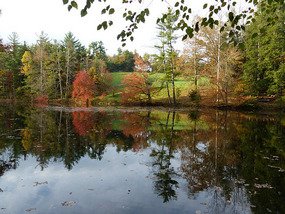
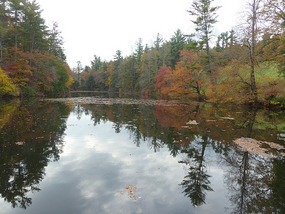
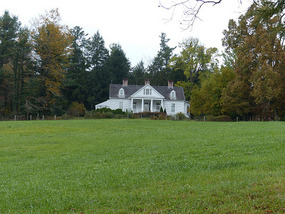

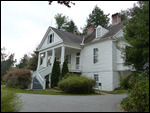
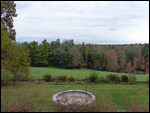

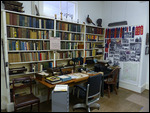
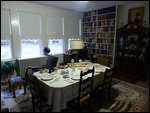
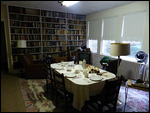
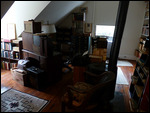
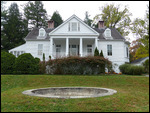
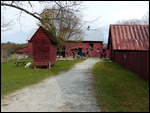
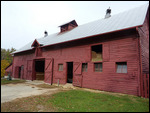
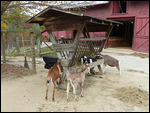
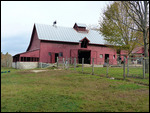
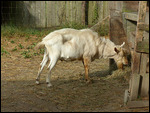
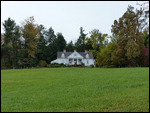
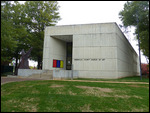
2025-05-23